88% of Bukit Panjang LRT renewal works completed: LTA
The renewal works mark a major milestone in efforts to improve the reliability of the line, which began operations in 1999.
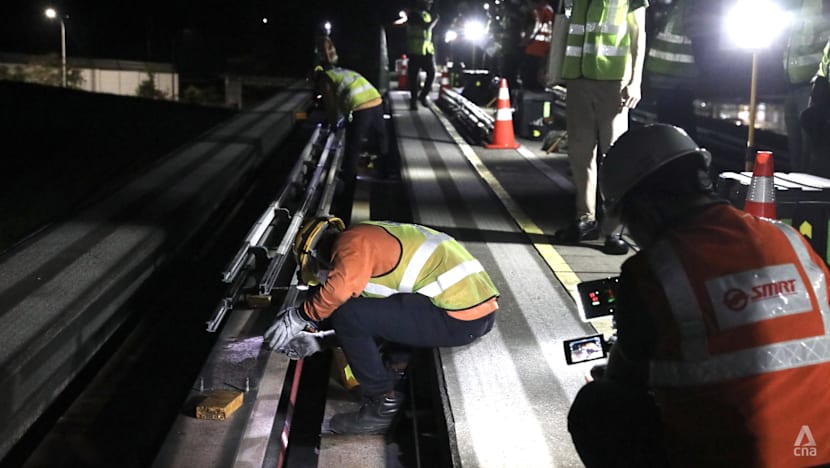
Workers carrying out power rail replacement works on the Bukit Panjang LRT tracks on Nov 15, 2025. (Photo: CNA/Mak Jia Kee)

This audio is generated by an AI tool.
SINGAPORE: About 88 per cent of renewal works on the Bukit Panjang Light Rail Transit (BPLRT) system have been completed, the Land Transport Authority (LTA) said on Sunday (Nov 16).
LTA said that “significant progress” has been made, and that the renewal works, which began in 2018, are slated for completion by the last quarter of 2026.
It will improve rail reliability and translate to smoother rides for commuters, LTA added.
The renewal works mark a major milestone in efforts to improve the reliability of the line, which began operations in 1999. Long-standing reliability issues that have dogged the line have been raised by former Transport Ministers.
In July, the line experienced two disruptions.
A key part of the renewal involves replacing and improving the power rail system, which has been in place since the LRT began operations.
“The works is not just about replacing parts. It also includes improving the design of components and modularised parts,” said LTA.
“These improvements allow for smoother transition of the light rail vehicles from one power rail to another and help with easier maintenance.”
The media was invited to observe one such power rail replacement procedure, which took place at Bangkit LRT station about 1am on Saturday.
HOW WORKERS REPLACE RAILS ON THE LRT TRACK

Workers were briefed on safety at about 11.30pm on Friday, before they unloaded work tools and materials from lorries at about 12am on Saturday.
They then manually carried all the equipment up the stairs to the platform.
LTA explained that the power rail spans 17km across the BPLRT network.
It is replaced in segments, with about 45m of power rail replaced each night.
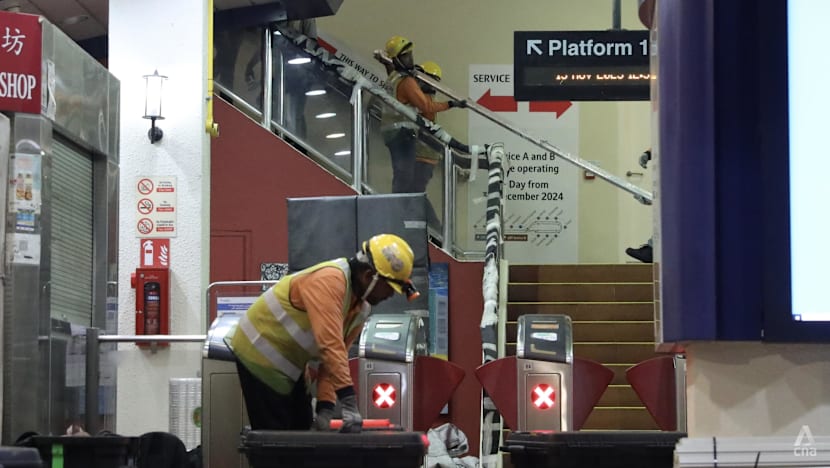
The power rail comprises five aluminium rods fitted together in parallel, which work together to supply electricity to the trains to keep them moving through the line.
At about 2am, CNA walked 220m on the above-ground LRT tracks from Bangkit station towards Fajar station to observe the workers making this replacement at the job site.
The workers - there were a total of 49 - first removed the old power rails.
At the same time, workers began to assemble the new power rail segments - each about 9m long - at Bangkit station before carrying them by hand to the job site.
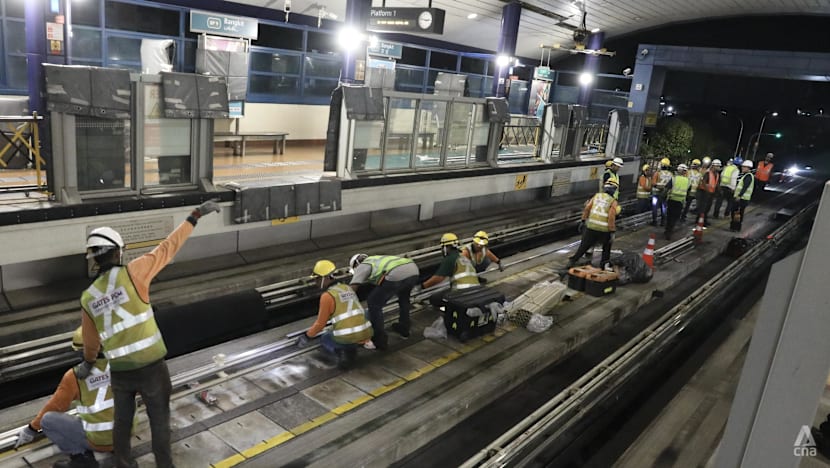
They worked quickly, as they only had a two-and-a-half-hour window to execute the task before they had to clear the tracks for preparations for revenue service that begins at about 5am.
LTA said that in replacing the tracks, the workers used a stud welding method, one that is “faster” and “generates relatively low noise” compared with thermal welding.
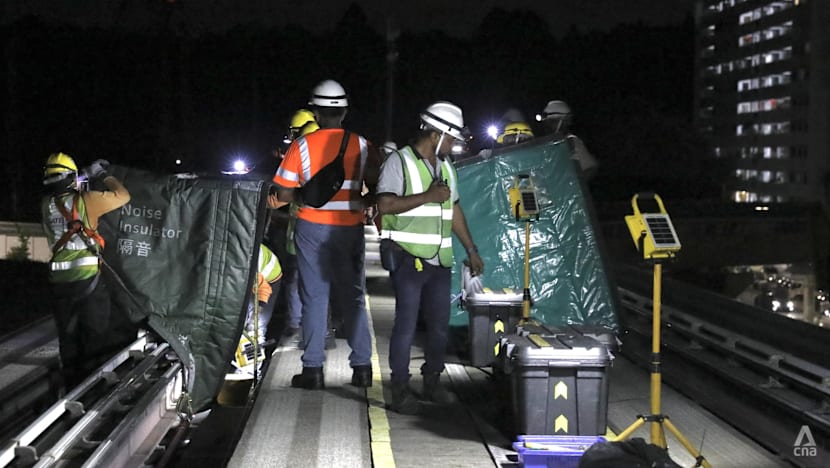
Stud welding sticks a metal pin onto another metal with heat, while thermal welding melts and joins two pieces together using high heat.
On Saturday, the team replaced 45m of power rails. They left the tracks at about 3am.
After each section is installed, thorough testing is also conducted to ensure all components are working.
The conditions on Saturday morning were cool and there was no rain.
LTA said that safety is a top priority. If there is any lightning risk, work would be stopped immediately, and on humid nights, workers are reminded to stay hydrated.
The power rail replacement works are about 20 per cent complete and are on track to finish by the fourth quarter of 2026, according to LTA.
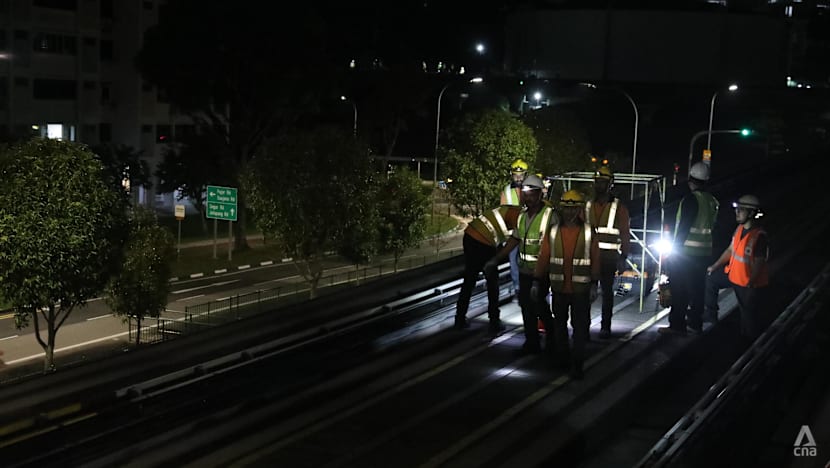
NEW SIGNALLING SYSTEM, TRAINS
Another major milestone has been the completion of its train signalling system renewal, to a system known as the Communications Based Train Control (CBTC)
LTA described the signalling system renewal as a “major undertaking” due to the need to integrate new technology with existing infrastructure.
The authority added that the system migration involved “extensive and iterative testing across multiple operational scenarios, including system fault simulations to ensure optimal performance under all conditions.”
“The signalling upgrade has been completed and we have been on full CBTC operations since Nov 8, 2025,” LTA said.
A refresh of the train fleet was also completed in October.
All 19 new light rail vehicles (LRV) have been deployed, while all 13 second-generation LRVs have been upgraded to be compatible with the CBTC.
LTA also shared that it is renovating the Operations Control Centre (OCC), which is akin to “the nerve centre of the BPLRT system”
This will be done to improve coordination and monitoring.
“The upgraded OCC will have a more ergonomic layout to facilitate improved coordination across staff and additional overhead displays for better monitoring of activities,” said the authority.
The system is currently managed from an interim OCC until the upgraded facility is ready for migration.
"LEGACY PROBLEMS"
The Bukit Panjang LRT is Singapore’s first LRT line, and it has been affected by technical problems and breakdowns since its opening in 1999.
In 2017, then Transport Minister Khaw Boon Wan described the line in Parliament as an “afterthought” for a built-up town that was constructed because of “political pressure”.
“No LRT is designed that way - in such a masochistic manner where you force yourself up and down, twist and turn,” Mr Khaw had said.
In 2024, then-Minister for Transport Chee Hong Tat acknowledged that the renewal works have been a “long journey” for commuters, but it is one that has to be undertaken to fix the “legacy problems” and deliver better service.
LTA had previously said that the renewal works for the line were slated for completion in 2024.
However, in 2022, then-Transport Minister S Iswaran said that due to the impact of COVID-19, the completion date would be pushed back to 2026.
















